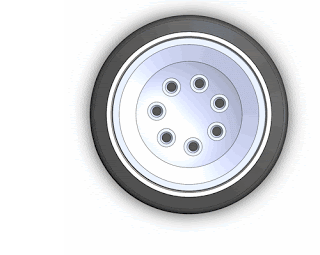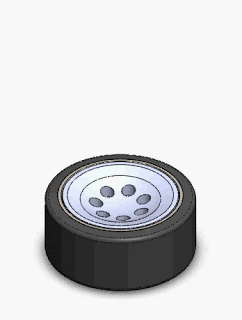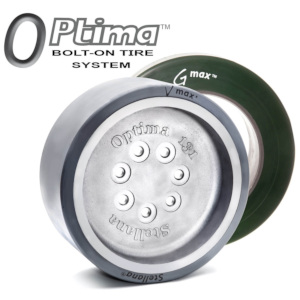Understanding & Preventing Walk-Offs
Your warehouse is in full swing. Forklifts are zipping in and out, moving products. Everything is going to plan, that is until a forklift operator experiences a walk-off. They don’t happen often, but when they do, walk-offs can be a serious safety hazard. You can easily wreck the transmission system if the wheel turns in or drop a load if the forklift comes to an immediate halt. Just think about the situations the operator could be in. Is the operator carrying a heavy load or up in the air on a scissors lift? From the forklift to the operator, to others in the surrounding area, walk-offs affect the entire operation and deserve a further discussion on preventative practices.
How and Why Walk-Offs Happen
Walk-offs occur for two main reasons. To understand these two reasons, you need to first understand the basic breakdown of a forklift press-on tire. We’re going to be looking at three main components: the hub, the band, and the urethane. The urethane and the band are held together with an adhesive bond whereas the band and the hub are held together with the pressure created from pressing a tire.

Reason 1: The Urethane Releases from the Band
When the band and the hub stay intact but the urethane separates, the cause is debonding/bond failure. This occurs because of poor manufacturing and has a simple solution. If you face this issue, you need to choose a better manufacturer with higher quality raw materials and engineering processes.
Reason 2: The Band Releases from the Hub
Walk-offs that happen due to the band releasing from the hub are more difficult to resolve because of the many causes. We can break it down into four possibilities.
Possibility 1: Improper Band Size
If band of the tire is too big, space between the band and the hub is created, leading to separation. Resolve this problem by making sure your supplier is using a qualified manufacturer of bands. You can also check for oversized bands by monitoring the pressing tonnage. If it takes less force than usual to press the tire, your band may be too big.
Possibility 2: Hub is too Small
The opposite problem can also happen whereas the hub is too small. This issue is caused by being machined undersized or the hub wearing out. Hubs are often reused, which can lead to wear and tear over time. A general industry rule of thumb you should follow is reusing the hub no more than three times. You can also apply the same knowledge about pressing force as mentioned in Possibility 1.
Possibility 3: Band Exposure
When the design of the hub leaves the band exposed, the band can crack. This is due to the design flaw of exposing an unsupported area that is subject to impact, resulting in cracking of the band. As the crack propagates, the tire will release from the hub creating a walk-off. Examples of this are the Crown 121501 (T42501) and Raymond 632-131 (T4285) tires. Both tires are engineered to leave part of the band exposed and should be avoided if possible.

Possibility 4: Pressing Incorrectly
Often, new tires are used to press off the existing tire. This shortcut creates two problems. First, the hub cannot be inspected for undersized and wear conditions. Second, the hub is pressed fully through the tire and creates walk-off potentials, especially the T42501 and T4285. To create the most contact between the hub and the band, the hub should be pressed into the top of the tire. You should always inspect the hub before reusing to avoid undersized conditions.
How to Prevent Walk-Offs
Now that the different reasons behind walk-offs are understood, the solutions and preventative practices can be reviewed. They are presented below in a good, better, best model.
Good
Follow the general industry rule of thumb and only reuse hubs three times. Never reuse bands.

Better
Utilize correct pressing technique:
- Press Out the Old Band
- Inspect the Hub before Repressing
- Press the Hub into the Top of the New Band
Throughout the pressing process, the pressing force should always be monitored and be to the OEM lift truck specifications.
Best
Even with these preventative practices in place, walk-offs can still occur in certain applications. Remove the risk completely by utilizing our Optima solution. Optima™ is a one-piece bolt-on tire system that incorporates a heavy-duty cast iron hub. Incorporation eliminates walk-offs, costly press-on charges, and replacement hubs. Speed up installation time and reduce downtime by optimizing your material handling equipment with Optima™. For more information about Optima™ or walk-offs, send us a message.
- Email: info@stellana.com
- Telephone: 262-348-5575 | 888-734-7687
Walk-offs; a serious safety issue that you can prevent.

